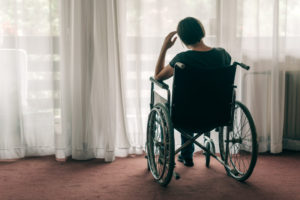 No one deserves to suffer harm. People with disabilities are especially vulnerable to abuse, neglect, and financial exploitation. However, there are legal measures that a person with a disability or their representative can take to shield themselves or their loved ones from these dangers. Getting a protective order might be the best way to safeguard a vulnerable person from individuals who wish them harm.
No one deserves to suffer harm. People with disabilities are especially vulnerable to abuse, neglect, and financial exploitation. However, there are legal measures that a person with a disability or their representative can take to shield themselves or their loved ones from these dangers. Getting a protective order might be the best way to safeguard a vulnerable person from individuals who wish them harm.
What Is a Protective Order?
A protective order, or order of protection, is an order issued by a state court that helps safeguard a disabled person from abusive or neglectful situations or financial exploitation. It may include such conditions as the following:
- Barring the individual who is abusing you from contacting you or coming to your home, place of employment, or school.
- Limiting your contact with the perpetrator to supervised settings.
- Requiring the abuser to cover expenses you incurred as a result of the abuse.
- Ordering the abuser to attend counseling.
- Prohibiting the abuser from owning a firearm.
How Can I Get a Protective Order?
There are two general types of protective orders: criminal or civil.
A civil protective order is available by filing the appropriate forms in a local civil court at any time.
A protective order based on criminal activity is available if the actions that give rise to the order of protection are illegal. The perpetrator was likely arrested for their crime and placed in police custody and awaiting either bond or trial. In that case, you can file a petition for an order of protection with the help of your district attorney’s office.
Who Files the Protective Order?
The individual who files the protective order depends on your circumstances. If you are an adult with a disability who can file your own petition, you may do so by filing with the appropriate court.
Suppose you wish to obtain a protective order for your disabled loved one who has been abused, neglected, or financially exploited by a family member or someone in their household. In that case, you may file for an order of protection if their disability prevents them from or makes filing a protective order difficult or impossible.
What Evidence Do I Need for a Protective Order?
To get an order of protection, you (or a representative) must show that an individual abused, neglected, or financially exploited you.
Abuse
Abuse can take many forms. Abuse can take the form of physical, sexual, or psychological abuse. Harassment and intimidation also qualify as abuse of a disabled person.
Neglect
Neglect is the failure to provide reasonable care to a person with disabilities. Neglect can take many forms. Examples of neglect include failure to provide necessities like food and water or to protect a person with disabilities from abuse.
Financial Exploitation
Financial exploitation happens when someone illegally uses a disabled person’s money or property through fraud or deception.
Note that to obtain a protective order in certain states, it must be a family member or someone in the disabled person’s household (not a neighbor or stranger) who has committed one or more of the above acts. However, in other states, there is no relationship requirement when seeking an order of protection for a person with a disability, which makes it possible to file a protective order against, for example, a caregiver who is not necessarily a family or household member.
What Can I Do if Someone Violates a Protective Order?
It is important to remember that a protective order is a court order, which means it has the force of law. If someone against whom you have a protective order violates it, call the police. Make a report about the violation immediately. The violator may face criminal penalties for defying the protective order.
Try to document the details of any violation or violations. This may include such facts as the date, location, and time of the incident and what occurred. Save any communications, including emails, videos, photos, or text messages, that may also be relevant. Having proof of any instances when someone violated the protective order may help you show the need for an extension of a temporary protective order or make the protective order permanent.
Connect With a Professional
If you or a loved one needs help securing an order of protection, consider consulting with a special needs planning attorney in your area, as regulations and requirements can vary by state or county.
You also may report suspected abuse, neglect, or exploitation of a vulnerable adult or person with a disability by contacting your local Adult Protective Services office. These agencies may be able to help in investigating allegations of abuse, evaluating the need for a protective order, assisting an individual in preventing further abuse, and connecting with law enforcement or legal services.

Recent Comments